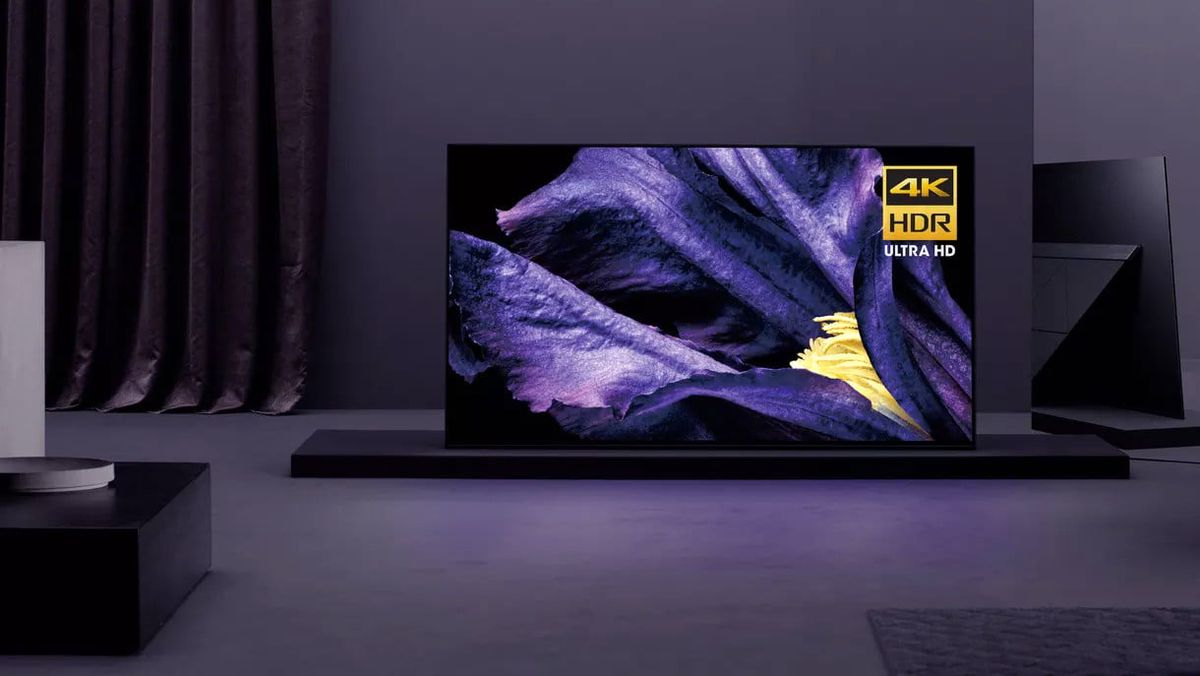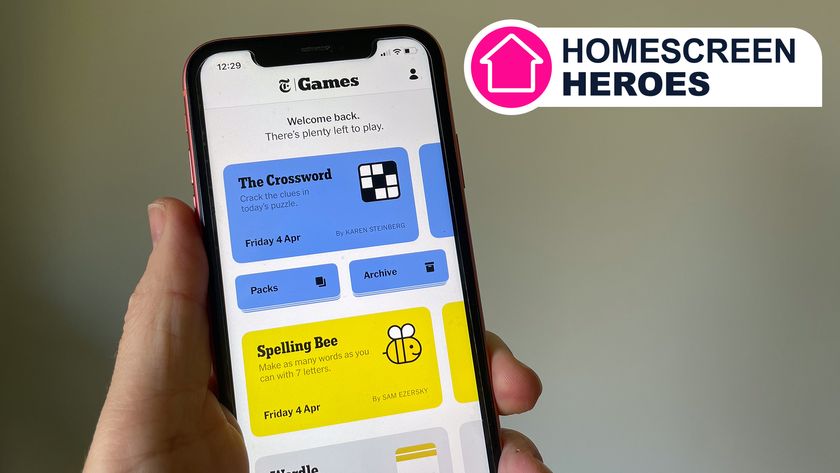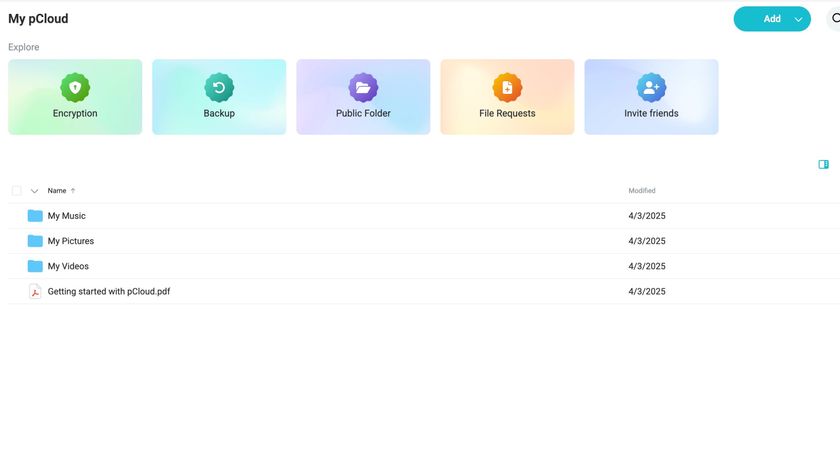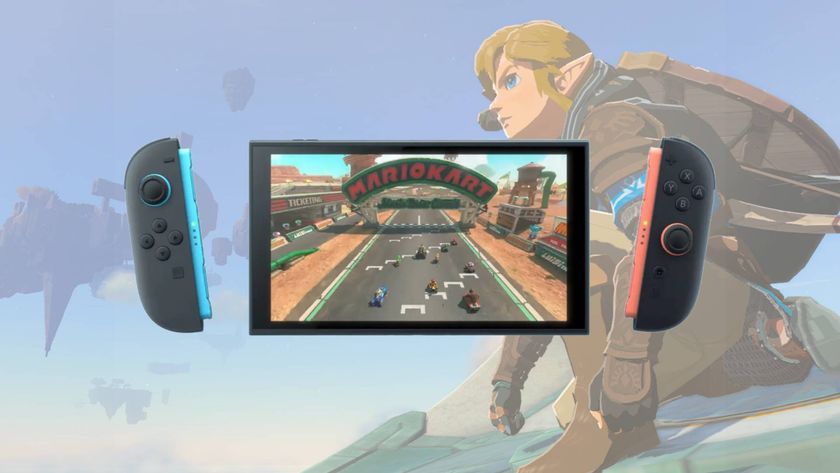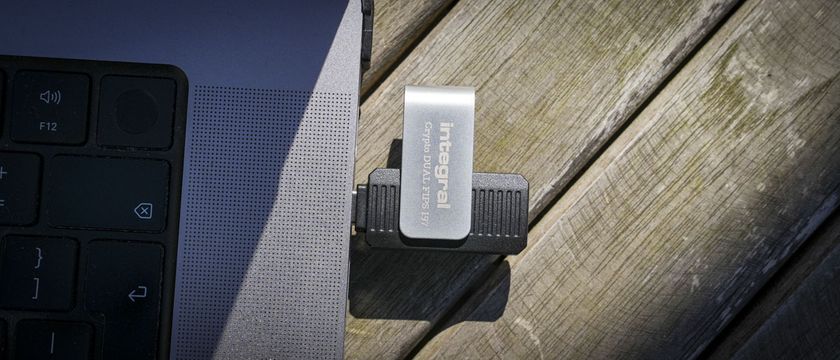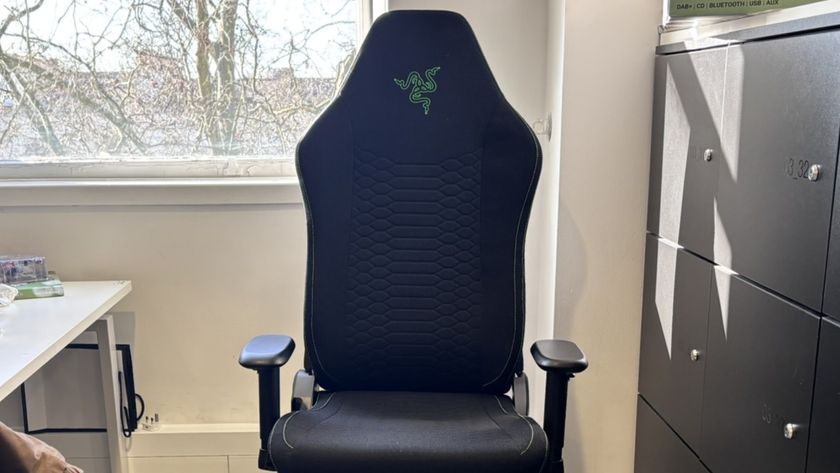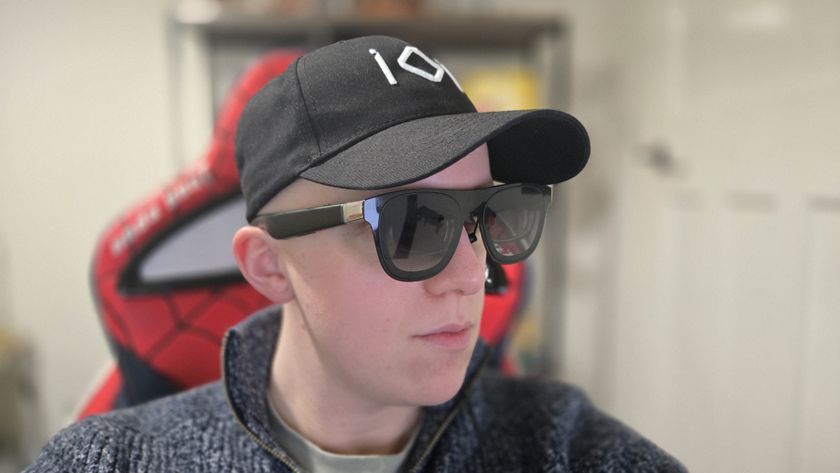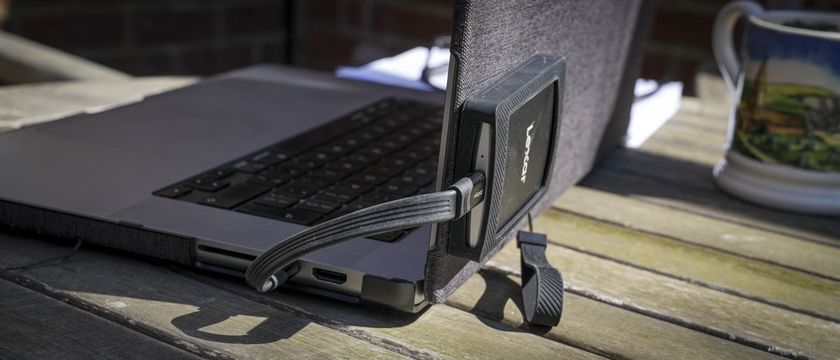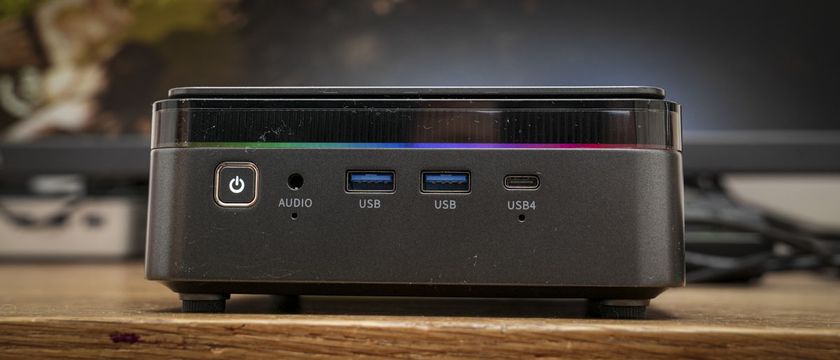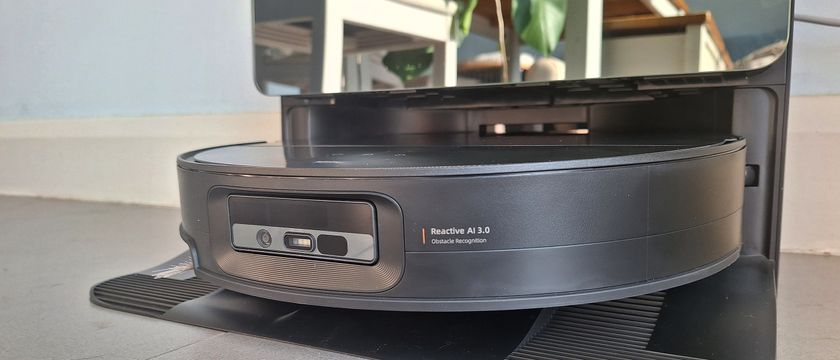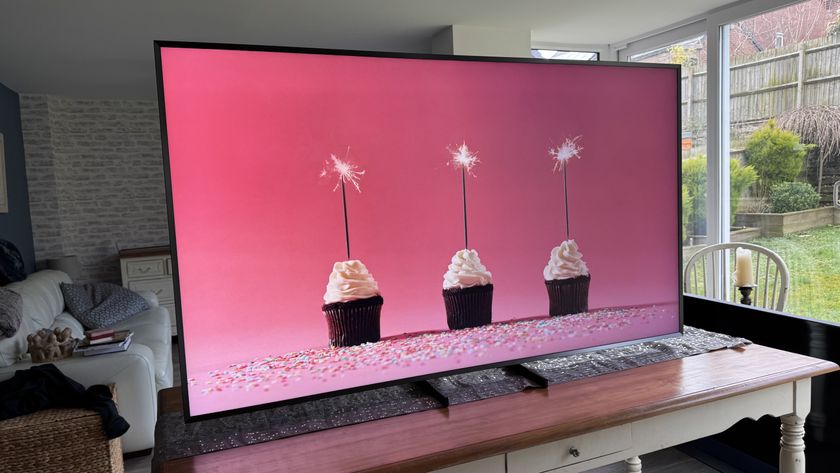TechRadar Verdict
A shiny new X1 Ultimate image processor, and the arrival of the Android Oreo TV OS, makes this a panel every 4K enthusiast will be lusting after. Even better, as it's coupled with an enhanced version of its Acoustic Surface Audio technology, it sounds ridiculously good, too.
Pros
- +
Nuanced UHD HDR images
- +
Impressive upscaling
- +
Audio+ sound system
- +
Android Oreo smart platform
Cons
- -
Lean back design
- -
Reworked image presets
- -
Black level crushing
Why you can trust TechRadar
Sony’s second-generation OLED flagship, the A9F, is coming at a good time – just as Samsung and LG have stepped up their games with the Samsung Q9FN QLED and LG E8 OLED, Sony has fired back with a phenomenal OLED of its own.
Sony's flagship OLED is a poster child for high-end TV innovation, boasting the most sophisticated image processor yet seen in a 4K screen, and comes with an upgraded ‘+’ version of Acoustic Surface audio, which does away with conventional loudspeaker drivers, using vibrating actuators on the panel to generate sound. Adding excitement, the set even comes preloaded with the latest Android TV OS, Oreo, which transpires to be a monster improvement over what we’ve seen before.
Do those facts alone make it worth Sony's new Master Series TVs, an appellation? For those wiling to splash the cash, it absolutely does.
Price and release date
The A9F is available in two screen sizes, 55- (XBR-55A9F) and 65-inches (XBR-65A9F) – and we've spent time with both. Here in the US, the Sony XBR-55A9F will run you $3,499 versus $4,499 for the XBR-65A9F, while in Australia you can expect to pay AU$5,799 for the 65-inch version when it becomes available shortly.
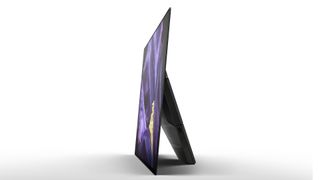
Design
- Lean-back minimalist design
- Acoustic Surface+ audio system
- Optional centre-channel sound mode
The A9F adopts the same lean back design as its predecessor, the Sony Bravia A1E OLED, although there are changes to the kickback stand. As a consequence it doesn’t seem to lean quite so far back and the set can also be wall-mounted, if preferred.
Setting the TV up takes a matter of seconds – you simply release the latch on the rear of the panel and attach the heavy counterweight – and the kickback stand incorporates electronics, audio system and connectivity. Duly posed and tuned in, it’s ready to view.
Connectivity is excellent. There are four HDMI inputs, all of which support 4K 60p 4:2:0 10-bit, 4:4:4 and 4:2:2 colour sub-sampling. There’s also an AV minijack input, digital optical audio output, LAN Ethernet port and two USBs, one a speedy v.3 for hard drive recording. Bluetooth and Wi-Fi are standard.
More unusually, there’s a dedicated centre speaker terminal (not tiny spring clips, but chunky binding posts able to accept banana plugs) which allows the TV to function as a centre speaker in a multi-channel sound system.
The biggest improvement comes in the implementation of Sony’s vibrating sound tech, Acoustic Surface Audio+, that adds a third on-screen actuator to create a centre channel between the previous stereo configuration. Also included is a second bass driver, effectively creating a 3.2 sound system. All three actuators are incorporated into the lean back stand, along with the twin bass drivers.
The upgrade sounds remarkable. Dialogue is clear and locked to the screen, and the additional bass driver adds weight. There was also clear channel steerage around our screen – but we'll cover this in more detail down below.
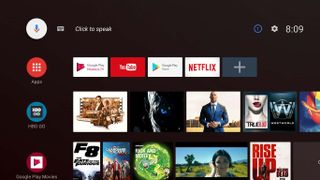
Smart TV (Android)
- Simplified Android Oreo interface
- Netflix, Amazon Prime Video and YouTube all 4K capable
Cluttered, clunky and prone to crashes, the Android smart TV OS has proved something of a trial over the years … but all that could be about to change thanks to the introduction of the Android Oreo update, a tasty refresh which fundamentally rethinks the platform.
The UX is now logical and inclusive. It no longer feels like you’re wrestling with an octopus. Oreo introduces plenty of nice new features, including a recently watched content rail, curated recommendations and a favorite channel listing.
Streaming services include Netflix, Amazon Prime Video and YouTube, all of which support 4K playback. Netflix and Amazon also offer HDR where available.
Thankfully, the UI is also significantly faster than previous Android TV OS implementations. It’s a massive upgrade all round.
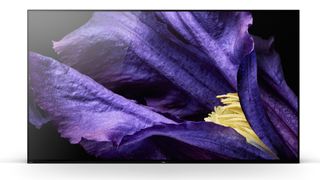
HD/SDR Performance
- Superb HDR-like upscale for SDR
- Punchy contrast and colour
HD/SDR (Standard Dynamic Range) handling is top notch. We particularly like the way Sony tends to boost peak whites on SDR material, to better take advantage of the panel’s native characteristics and give an almost HDR-like appearance to images. It does this without overcooking the average picture level.
There’s no shortage of clever ideas: The X1 Ultimate introduces two new intelligent image processing modes – Object-based Super Resolution and Object-based HDR remaster. These essentially enhance individual objects within a picture, giving greater definition. A pixel panel booster is used to pimp color and contrast. Wide color gamut content looks luxurious.
Peak panel luminance is adjustable. If you want to maximize white highlights, it’s worth setting this to High, rather than Medium. (The difference is subtle but effective.)
For most users, the Standard image preset offers the best overall balance when watching in a room with some level of ambient light. However, the Vivid mode is also surprisingly rewarding with animation and CG heavy blockbusters alike. A guilty pleasure, the preset combines amped up detail with extreme dynamics and colors are oversaturated but not noisy.
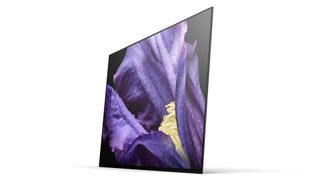
4K/HDR Performance
- Excellent peak luminance
- Dolby Vision a bit of a mixed bag
- Good motion handling
The A9F is the first OLED outing for Sony’s new X1 Ultimate chipset, and it’s a cracking debut. Considerably more powerful than the brand’s long-standing X1 Extreme, the subtle detail and color nuance repeatedly had us doing a double - and triple - take. We expect perfectly deep blacks and vibrant colors with 4K OLED screens, but the A9F has an additional richness.
There are fewer obvious differences between the various image modes when watching 4K HDR: For example, for most televisual fare, Standard is again the better option. The new Custom image is actually a retooling of the brand’s old Cinema Pro preset, one which engineers have tuned to match Sony’s Pro OLED mastering monitor, the BVM-X300. In a dark room it works remarkably well.
When it comes to UHD detail, the brand’s X1 Ultimate image processor does a phenomenal job, enhancing definition and nuance to scenery and big close-ups, without obvious edge emphasis.
HDR performance is similarly impressive. We measured peak brightness at just over 900 cd/m2 (aka nits) with a 5% HDR window. HDR pixels tend to peak fast and take up limited screen estate, so this Sony will have no problems with most HDR. Lighting effects, explosions, reflections, glinting objects, are all lifted and rendered with precision.
Of course, HDR is equally about the darker aspects of the picture, and there’s plenty of shadow detail to explore. Although your choice of image preset could affect what you see onscreen.
While we're on the subject, HDR support covers standard HDR10, broadcast HLG and Dolby Vision. The latter isn’t limited to the set’s internal app; it works with exterior sources, too. (Star Wars The Last Jedi on UHD Blu-ray looks exceptional in DV.) Unfortunately, however, there’s no support for HDR10+.
With Dolby Vision, there’s a choice of Dark and Bright modes to compensate for viewing conditions. However, Dolby Vision Dark is just a bit too aggressive, and has a tendency to crush near black detail, even when viewed in a fully dark room. We found the brighter alternative nearly always a better choice.
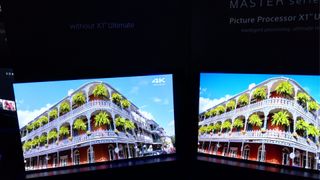
One of more contentious options introduced in the Master Series range is a Netflix Calibrated mode that supposedly emulates the image seen on Netflix mastering monitors. It’s a Cinema preset by any other name, and not a particularly engaging one either. It will overwrite a Dolby Vision presentation, and tends to look a tad ... lifeless.
Motion handling, however, is extremely good. For the most cinematic of images, without obvious interpolation effects, we recommend the Motionflow Custom setting, with Smoothness set to 1 on the sliding scale, and Clearness to Low. Avoid the High Clearness option as this darkens the image and introduces unacceptable levels of flicker.
Lost in Space Executive Producer Zack Estrin was on hand to endorse the initiative. But as far as we could make out, the setting isn’t driven by metadata and is basically just a generic recipe – so our expectations, at this point, are low.
Interestingly, Sony made very little of the fact that the screen will also land with the new Android Oreo TV OS. Given how inelegant Android has been to date, this is actually a rather exciting prospect. Certainly the new UI looks far cleaner and more manageable than what we’ve experienced so far. It’s a definite step forward.
Sound
- Full-bodied, directional audio
- Dedicated centre speaker mode
Sony rewrote the rulebook for TV audio with the introduction of Acoustic Surface technology. Using actuators to vibrate the OLED panel itself, a technique we’ve seen in various devices beforehand, turned out to be a brilliant wheeze for TV: With Acoustic Surface+, we get a third centre actuator, designed to better lock dialogue in a stereo image.
This expansion is perhaps less significant on this 55-inch iteration than its bigger brother, but allied to those two mid-range woofers, the set makes a fulsome noise.
If you opt to use the centre channel audio mode, the set’s individual amplifier modules are aggregated together, and the incoming audio signal re-amplified. While the end result works, the TV won’t be able to match the output of anything other than a budget standalone home cinema amp. You will also experience timbre differences between the Acoustic Surface output and conventional drivers.
Other panels to ponder...
Still impressive, but considerably cheaper than this Master Series Sony are the LG C8 OLED and Sony’s own AF8 OLED. While neither quite matches it for performance, you’ll be paying a significant price premium for what might be deemed small increments in performance.
Final verdict
The A9F is unquestionably Sony’s best OLED offering to date, and arguably a strong contender for high-end screen of the year. When it comes to image quality and audio performance it’s deliciously impressive. While we experienced some minor issues (notably Black level crushing on Dolby Vision, and that Netflix Calibrated mode), niggles are to be expected on a set as ambitious as this. If you can live with the slightly idiosyncratic design, and afford the asking price, it’s a glorious UHD display.
- Will the Sony A9F join our list of the best 4K TVs? Only time will tell...
Steve has been writing about AV and home cinema since the dawn of time, or more accurately, since the glory days of VHS and Betamax. He has strong opinions on the latest TV technology, Hi-Fi and Blu-ray/media players, and likes nothing better than to crank up his ludicrously powerful home theatre system to binge-watch TV shows.
